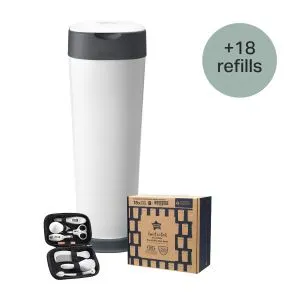
Ultimate XL Nappy Disposal Bundle with 18 Refills
Bundle & Save 40%
Subscription orders can be cancelled at anytime. Free delivery on all subsequent subscription orders. Find out more about subscriptions.
They’re easy and fuss free
Your products are automatically sent to you
You save up to 10% when you sign up for a subscription
You can cancel at any time

As a new parent, thinking about feeding your baby can be both exciting and daunting. With so many different terms floating about and tons of baby feeding equipment on the market, it can be overwhelming to know what everything means and what you're truly going to need.
But don't stress, that's why we've put together this guide! It's here to help you understand the language of baby feeding and to help you decide what essentials you'll need to keep your new arrival fed and happy.
So, let's dive in and run through the world of infant feeding from A to Z!
Explore the Range
Explore the Range
Explore the Range
*Based on a 5oz feed, room temperature water tank, refers to time from start of hot shot to completion of cool shot.
**For verification see tommeetippee.com/perfect-prep-explained.
Explore the Range